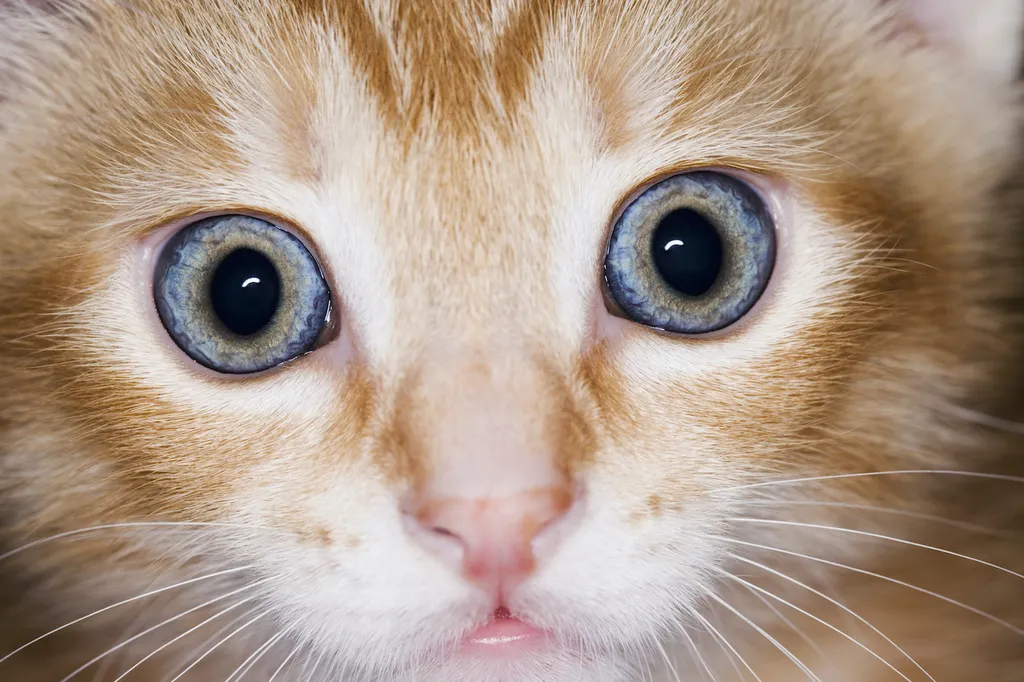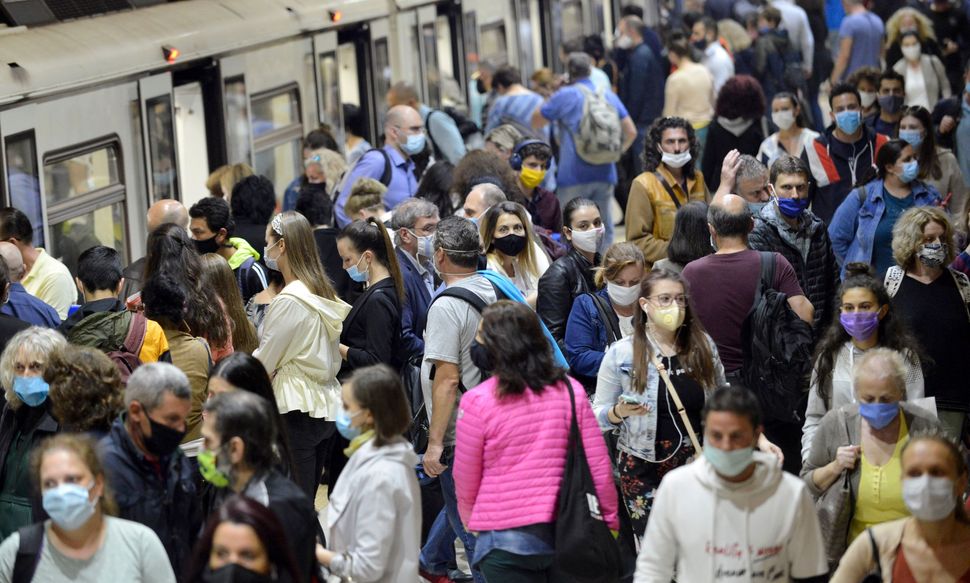애완동물에게
훨씬 더 치명적인
코로나 바이러스가 나타나면
어떻게 될까?
By Mick Bailey about 21 hours ago
약 21시간 전 믹 베일리

(Image credit: Getty Images)
(이미지 크레딧: 게티 이미지)
The recent suggestion that British ministers may have to consider culling or vaccinating animals to prevent the coronavirus from picking up another dangerous mutation and jumping back to humans may sound like sudden panic, but it's just part of a long debate among scientists.
최근 영국 장관들이
코로나바이러스가
또 다른 위험한 돌연변이를 일으켜
인간에게로 되돌아가는 것을 막기 위해
동물을 도태하거나 예방접종하는 것을
고려해야 한다는 제안은
갑작스런 공황으로 들릴지 모르지만,
과학자들 사이의 오랜 논쟁의 일부일 뿐이다.
Evidence that cats could be infected with SARS-CoV-2, the virus that causes COVID, emerged as early as April 2020 from Wuhan, China. E vidence that they could also transmit the infection to other cats under particular conditions appeared in the same month. Since then, infections have been confirmed in mink in Denmark and the Netherlands, in big cats in zoos, in dogs, ferrets and a range of other species. It's also worth remembering that the source of SARS-CoV-2 is probably bats and that other species of wildlife may also be infectible.
고양이가
COVID를 유발하는 바이러스인
SARS-CoV-2에
감염될 수 있다는 증거가
이미 2020년 4월 중국 우한에서 나왔다.
같은 달 특정 조건에서
다른 고양이에게도
감염이 전달될 수 있다는 증거가 나타났다.
이후 덴마크와 네덜란드의 밍크,
동물원의 큰 고양이, 개, 흰담비 등
일련의 다른 종에서 감염이 확인됐다.
또한 SARS-CoV-2의 근원은
아마도 박쥐일 것이고
다른 종류의 야생동물들도
감염될 수 있다는 것을
기억할 필요가 있다.
Infection of some of these species with SARS-CoV-2 can cause actual disease, creating veterinary, welfare or conservation problems. However, transmission to or from companion animals that spend a lot of time in close contact with people also presents extra problems for trying to control a pandemic in humans. For example, if transmission between humans and cats happens easily, then controlling the pandemic in people might require measures to prevent it, and that might include vaccinating and quarantining cats.
이러한 종들 중 일부는
SARS-CoV-2에 감염되면
실제 질병이 발생, 수의학, 복지
또는 보존 문제가
발생할 수 있다.
그러나 사람과 가까이 접촉하는 데
많은 시간을 보내는 반려동물로부터
혹은 에게 전염은
또한 사람에게서 전염병을 통제하는 데 있어
추가적인 문제를 야기한다.
예를 들어, 사람과 고양이 사이의
전염이 쉽게 일어난다면,
사람들의 전염병을 통제하는 것은
예방책을 필요로 할 수도 있고,
그것은 고양이에게 예방 접종을 하고
격리하는 것을 포함할 수도 있다.
There is good evidence for transmission from humans to cats, but very little evidence for transmission from cats to humans. Nor is there much evidence for transmission between cats in normal situations (that is, not in a laboratory). At the moment, there's no real reason to be concerned that infections in cats are a major problem. You're at much greater risk from your family and friends with COVID than from their cats, although you should take normal hygiene precautions you use to reduce the risks of catching other diseases (such as toxoplasmosis) from cats.
사람에서 고양이로 전염된다는 증거는
충분하지만 고양이에서 사람으로
전염된다는 증거는 거의 없다.
또한 정상적인 상황에서
고양이 사이의 전염에 대한
많은 증거도 없다(즉, 실험실에서가 아닌).
현재로서는 고양이 감염이 주요 문제라고
우려할 실질적인 이유가 없다.
고양이로부터 다른 질병(예: 독성 플라스마증)에
걸릴 위험을 줄이기 위해 사용하는
일반적인 위생 예방 조치를 취해야 하지만,
여러분은 고양이보다
가족이나 친구들에게서
훨씬 더 큰 위험에 노출되어 있다.
There is currently no major risk from our pet cats and dogs that would justify specific control methods such as culling or quarantine. In the longer term, though, there is a concern about the appearance of new variants. These may be more easily transmitted (like the alpha variant) or more able to infect vaccinated or previously infected people (like the beta variant). Variants may cause more severe disease, or they may cause less severe disease and become more like the normal winter colds or flu.
현재 우리의 애완 고양이와 개로부터
도태 혹은 격리와 같은 특정한 통제 방법을
정당화할 수 있는 큰 위험은 없다.
그러나 장기적으로 보면
새로운 변종의 출현에 대한 우려가 있다.
이것들은 백신접종을 한 사람들 혹은
이전에 감염된 사람들에게
더 쉽게 전염되거나 (알파 변종처럼)
더 잘 감염시킬 수 있다(베타 변종처럼).
변종은 더 심각한 질병을 일으킬 수도 있고,
덜 심각한 질병을 일으킬 수도 있고
일반적인 겨울 감기나 독감과
더욱 가까울 수도 있다.

You're at greater risk of catching COVID from people – not pets. (Image credit: Shutterstock)
애완동물이 아닌 사람으로부터
COVID에 걸릴 위험이 더 높다.
(이미지 크레딧: 셔터스톡)
It's almost inevitable that more of these variants will appear because the virus adapts to all our attempts to control it. These new variants in people are being spotted quickly in the U.K. because it is carrying out the biggest surveillance program in history. The long-term risk of SARS-CoV-2 in other species is that if the virus starts circulating in them, a new, even more unpleasant variant could appear and not be recognized as a problem until it gets passed back into people.
바이러스가 우리의 모든 제어 시도에 적응하기 때문에,
이러한 변종들이 더 많이 나타나는 것은
거의 불가피하다.
영국에서 사람들에게서
이러한 새로운 변종들이 빠르게 점령되는 것은,
그것이 역사상 가장 큰 감시 프로그램을
수행하고 있기 때문이다.
다른 종에서 사스-CoV-2의 장기적 위험이란,
만약 바이러스가 사스-CoV-2에서 퍼지기 시작하면,
새롭고 훨씬 더 불쾌한 변종이 나타나,
사람들에게 다시 전달되기 전까지
문제로 인식되지 않을 수 있다는 것이다.
Although rare, the U.K. government does need to consider these possible future scenarios, and the possibility of new variants appearing in animals was part of the recent report from the Scientific Advisory Group for Emergencies (Sage) about the long-term evolution of SARS-CoV-2. The most important way of reducing the risk will be surveillance to identify any new variants in animals that aren’t yet appearing in people. So don't be surprised if your vet is asked to provide a swab sample from your pet if it gets respiratory symptoms — and you may also be asked to provide one yourself if that happens.
드물지만, 영국 정부는
이러한 가능한 미래 시나리오를 고려할 필요가 있으며,
동물에서 새로운 변종이 나타날 가능성은
사스-CoV-2의 장기 진화에 대한
과학 비상 자문 그룹(Sage)의 최근 보고서의 일부였다.
위험을 줄이는 가장 중요한 방법은
아직 사람에게 나타나지 않은 동물에서
새로운 변종을 식별하는 감시일 것이다.
그러니, 만약 여러분의 수의사가
여러분의 애완 동물이 호흡기 증상을 보일 경우,
여러분의 애완 동물로부터
면봉 샘플을 제공하라고 요청받더라도
놀랄 필요가 없으며--그런 일이 생기면
직접 제공하라는 요청을 받을 수도 있다.
Mass vaccination of pets is unlikely
애완동물의 대량 예방접종은
그럴듯하지 않다.
Vaccination of pets is a lot less likely. Dog and cat vaccines for COVID are being developed, but there may be problems in showing that they are effective.
애완동물의 예방접종 가능성은 훨씬 낮다.
개·고양이용 백신이 개발되고 있지만,
효과가 있다는 것을 보여주는 데는
문제가 있을 수 있다.
Vaccines were only approved for use in people after late-stage trials in humans, where large numbers of people were vaccinated and followed up to see if they were protected from infection. Even then, enough people in the trial had to become infected to demonstrate any effect of the COVID vaccine versus the control vaccine. Carrying out similar trials in dogs and cats will be hard while infection rates are low (or even unknown, as at present), and smaller trials simply don’t provide good enough evidence.
백신은 인체에서 백신을 대량으로 접종하고
감염으로부터 보호받고 있는지 확인하기 위해
후속조치를 한 후 사람들에게만 사용이 허가됐다.
이때도 실험에서 충분한 사람이 감염돼
통제백신 대비 COVID 백신의 효과를 입증해야 했다.
개와 고양이에게 비슷한 실험을 하는 것은
감염률이 낮은 반면 어려울 것이고(또는 현재와 같이
알려지지 않은 상태일 수도 있음),
소규모 실험들은 충분한 증거를 제공하지 못할 뿐이다.
It might be possible to use the same vaccines in cats and dogs as in humans, but that also poses a risk. It's now accepted that exposing vaccinated people to new infections may be a way of selecting for variants that can escape the immune response produced by the vaccine. If the same basic vaccine designs are used in cats and dogs, this may select for vaccine "escape variants" in those species, which can then transfer back even into vaccinated people. Particularly if the vaccines haven't been shown to be as effective as in people, or if they are only given to some cats and dogs.
사람에서와 같은 백신을
고양이와 개에게 사용하는 것은
가능할 수 있지만,
그것은 또한 위험을 야기한다.
백신을 접종한 사람들을
새로운 감염에 노출시키는 것이,
백신이 만들어 내는 면역 반응을
피할 수 있는 변종들을
고르는 방법일 수 있다는 것이
이제 받아들여지고 있다.
고양이와 개에게
그러한 동일한 기본적인 백신 설계가
사용된다면,
이는 그들 종에서 백신 '탈출 변종'을
선택하게되는 것일런지도 모르며,
이는 백신 접종자들에게로조차도
다시 전이될 수 있다.
특히 백신이 사람들에게서처럼
효과가 나타나지 않았거나,
일부 고양이와 개에게만
백신을 투여했을 경우,
더욱 그러하다.
Widespread euthanasia of pets as a precaution (what would be called "culling" in livestock or wildlife) is highly unlikely. Imagine the situation that a highly dangerous, potentially lethal variant spreads from a cat to its owner and family. The infection in people would ideally be contained by appropriate isolation in a suitable facility (as in the small number of Ebola cases in the U.K.), stopping the spread. Then the source cat and immediate cat contacts — if any — might be euthanized to reduce the immediate risk to people and other cats.
예방책으로,
애완동물을 광범위하게
안락사 시키는 것
(가축이나 야생동물에서
"도태"라고 불리는 것)
은, 가능성이 매우 낮다.
매우 위험하고
잠재적으로 치명적인 변종이,
고양이로부터 주인과 가족에게
퍼지는 상황을 상상해 보자.
사람들의 감염은 적절한 시설
(영국의 적은 수의 에볼라 환자처럼)
에서, 적절히 격리되어,
확산을 막는 것이 이상적이다.
그러면 근원고양이와 직계고양이와의
접촉이 있다면--만일 그렇다면--,
사람과 다른 고양이에게
즉각적인 위험을 줄이기 위해
안락사를 시킬 수도 있다.
There would be no point in large-scale euthanasia of cats unless the variant was already widespread. Providing that surveillance for SARS-CoV-2 in people and animals is in place to identify any such variant before it becomes dangerous, there’s no point in worrying about large-scale euthanasia of our pets.
변종이 이미 널리 퍼지지 않았다면,
고양이의 대규모 안락사에
의미가 없을 것이다.
사람과 동물에 대한
SARS-CoV-2 감시가 위험해지기 전에,
그러한 변종을 식별하기 위해 시행된다면,
애완동물의 대규모 안락사에 대해
걱정할 필요가 없다.
Surveillance programs in pets and wildlife are starting to be funded through government agencies, such as UK Research and Innovation. These programs, and the continued debate, will be critical in avoiding poorly informed over-reactions in the future.
애완동물과 야생동물의 감시 프로그램은
영국 연구의 혁신과 같은 정부 기관을 통해
자금이 지원되기 시작했다.
이러한 프로그램들과 계속되는 논쟁은
앞으로 잘못된 정보에 의한 과잉 반응을 피하는 데 있어
매우 중요한 역할을 할 것이다.
his article is republished from The Conversation under a Creative Commons license. Read the original article.
그의 기사는 The Conversation에서,
크리에이티브 커먼즈 라이선스로
다시 출판되었습니다.
원본 기사를 읽어보세요.
Follow all of the Expert Voices issues and debates — and become part of the discussion — on Facebook and Twitter. The views expressed are those of the author and do not necessarily reflect the views of the publisher. This version of the article was originally published on Live Science.
Facebook과 Twitter에서 -- 토론의 일부가 되는 --
전문가 목소리(Expert Voice)의 모든 이슈와 토론을
팔로우하세요.
표현된 견해는 저자의 견해이며, 반드시 출판사의 견해가
반영되는 것은 아닙니다.
이 기사의 버전은 원래 Live Science에 게시되었습니다.

댓글 없음:
댓글 쓰기